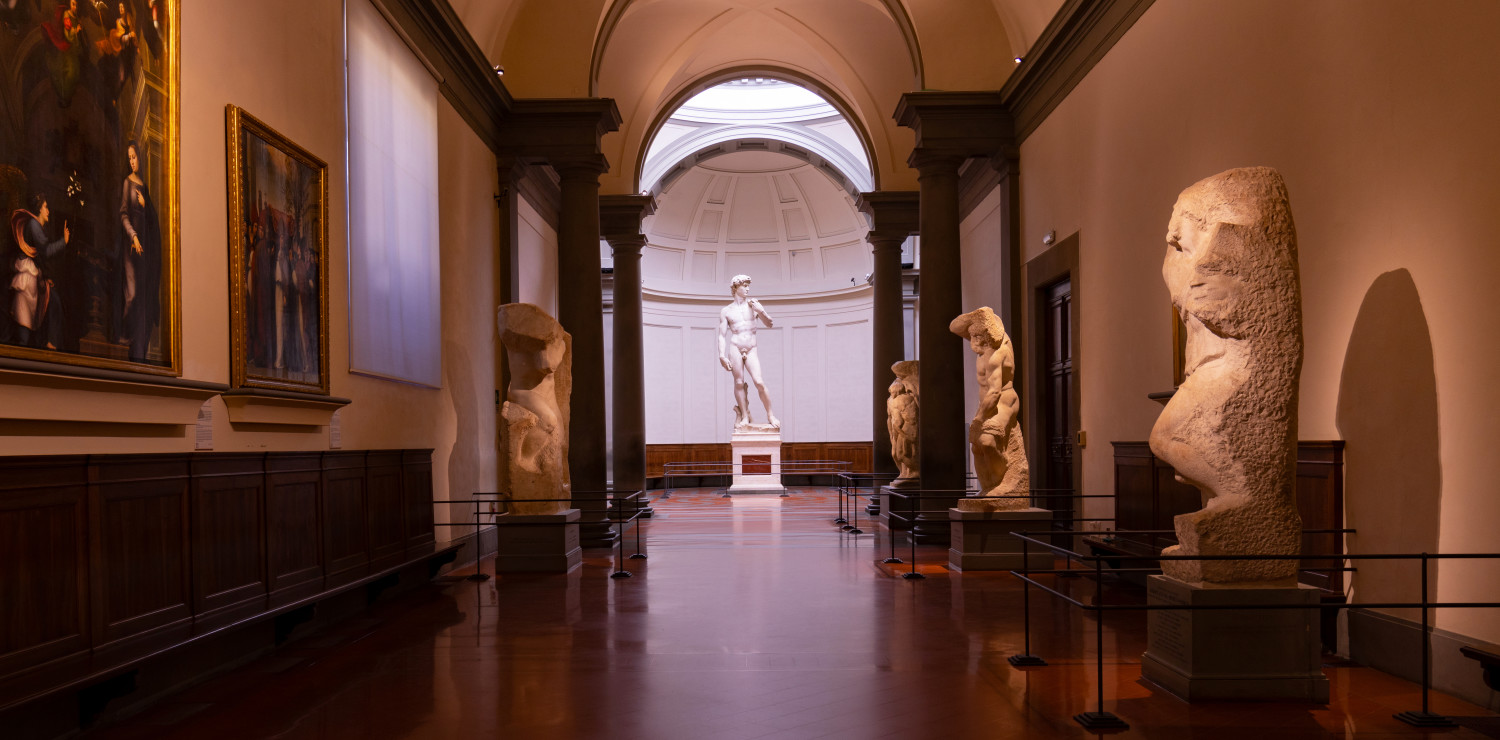The Academy Gallery of the 21st Century as told by Cecilie Hollberg
The Gallery Director takes us on a tour of his most beautiful works
“A visit to the Accademia is always a great opportunity to get up close and personal with Beauty, but today this is truer than ever”. Cecilie Hollberg, director of Florence’s Accademia Gallery since 2015, gets straight to the point. The restoration began at an extraordinary time: 8 March 2020 saw the closure of all Italian museums; and work at the Accademia was scheduled to start on the very next day. “We refurbished seven rooms from floor to ceiling; we weren’t afraid of the lockdown. In fact, it allowed the work to be more concentrated, without having to wait until the museum was closed in the evenings or on Mondays” the director tells us.
 Michelangelo’s masterpiece seen from the side transepts
Michelangelo’s masterpiece seen from the side transeptsWe meet on a Monday in September: the museum’s closed, the work is completed. Everything is ready for the inauguration on 10 October. Only one small piece is missing: the Gipsoteca of Lorenzo Bartolini, which is actually almost finished, although it will remain under wraps until October. The new design must be beautiful; it’s clear from the twinkle in Cecilie’s blue eyes. She’s relaxed and smiling. It’s been almost three years of intense work, perhaps more complicated than expected, but it has been worth it: “We’ve replaced the lighting and air conditioning systems, worked on the statics and replaced the shabby trusses. There are things that get more attention from visitors, but the work they don’t see is perhaps more of a challenge: we only discovered a lot of damage after we had started work” Cecilie continues.
 Painted cross with the Virgin and St. John, Bernardo Daddi
Painted cross with the Virgin and St. John, Bernardo DaddiToday the whole museum is finally lit with LEDs, whose light caresses paintings and statues, allowing us to discover previously unseen aspects. “Some works looked new even to me and our staff: we found ourselves awed and fascinated before masterpieces we’d been seeing every day, thanks solely to the new lighting.”
The last lights to be installed are those of David, the Prisoners and the side transepts of the Tribune. This is a museum that has been updated and rejuvenated: founded in the 19th century, today it has the stamp of the 21st. “It’s a genuine reawakening”, Hollberg confirms. “Take for example the Hall of the Colossus: previously, visitors didn’t linger there, they were in a hurry to get to my marketing manager (as the director jokingly calls David - ed). But now they stop in wonder in front of the plaster Colossus and the 15th and 16th century paintings that stand out against the blue of the walls.”
 Colosso Hall
Colosso HallAccademia blue: softer than the well-known Klein blue but destined to become equally famous, and the perfect backdrop for works by Paolo Uccello, Sandro Botticelli, Domenico Ghirlandaio, Filippino Lippi, Perugino, Giambologna.
The 13th and 14th century rooms, meanwhile, are enveloped in a green that makes the gold of altarpieces shine even brighter: angels and Madonnas by Agnolo Gaddi and Giovanni da Milano, a fragment of Giotto - the source of the ‘borrowed” green, so perfect to illustrate an era - seem to gain in three-dimensional splendour.
“The restoration work was also an incentive to inspect all the pieces, dust them off and restore them where necessary.”
And we finish with another piece of news: the Museum of Musical Instruments is now part of the visitor experience, offering a glimpse of Renaissance music with the collections of the Grand Dukes Medici and Lorena. “These are genuine works of art”, Cecilie concludes, “including, among other things, the first piano built by Bartolomeo Cristofori, who invented the instrument, and Stradivari’s Medici viola, every part of which is completely original.”









